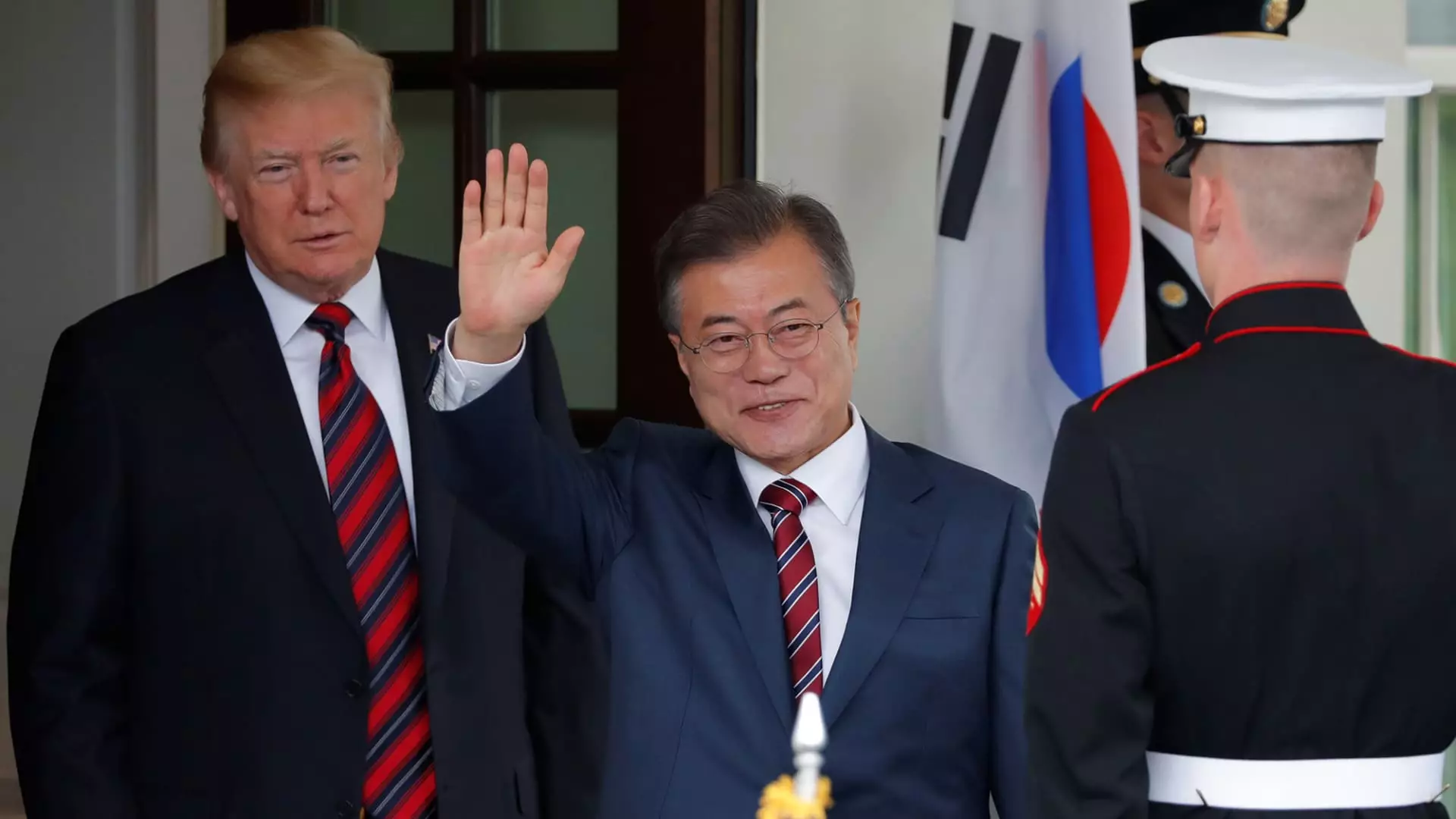In recent months, the U.S. automotive industry has been engulfed in discussions about evolving tariff policies proposed by President Donald Trump. The implications of these policies—especially concerning import duties on vehicles from South Korea and Japan—could reshape the landscape of car sales in the United States. Notably, South Korea and Japan accounted for a substantial portion of the vehicles sold in the U.S. last year, with South Korea alone contributing a record 8.6%. This article delves into the intricacies of these tariff threats and the ensuing ripple effects on the auto industry.
Trump’s proposed tariffs could dramatically escalate, particularly for countries like South Korea and Japan, which have enjoyed favorable trading terms in the U.S. market. The absence of significant duties, especially when compared to the 25% tariff the President has dangled for Canada and Mexico, stands to place these East Asian nations in a precarious position. While General Motors and Hyundai currently export vehicles free of tariffs from South Korea, an escalation of duties could imperil this advantageous arrangement.
The automotive market is not static; it is subject to shifts that can alter competitive advantages overnight. The data indicates that South Korea has overtaken Japan as the second-largest exporter of cars to the U.S., trailing only Mexico, which enjoys its own robust share of 16.2% of auto sales. With U.S. imports from Japan under a modest 2.5% tariff, it seems the country’s historical dominance in vehicle exports to the U.S. is waning. The trends show a stark contrast: while Japan’s auto sales in the U.S. have seen a decline, South Korea’s exports have surged dramatically in recent years, underlining a significant transformation in market dynamics.
The implications of these performance indicators are critical for manufacturers. South Korean auto exports have seen an increase from less than 845,000 vehicles in 2019 to more than 1.37 million by 2024. This growth, tinged with potential tariff threats, poses a complex challenge for South Korean automakers, as they might find their competitive edge slipping if tariffs are enacted.
Two industry giants—General Motors and Hyundai—are particularly vulnerable in light of the potential tariff changes. GM, having increased its imports from South Korea significantly in recent years, has emerged as a critical player in this evolving narrative. The company’s shift towards producing models such as the Buick Encore GX and Chevrolet Trailblazer in South Korea highlights a strategy to capitalize on lower production costs while still meeting U.S. market demands. Yet, with both GM and Hyundai exposed to the complexities of trade and tariffs, any increase could lead to price hikes that consumers might resist.
Terence Lau, a seasoned trade expert, emphasizes that while the automotive industry has historically adapted to evolving trade landscapes, such adjustments require time and strategic planning. His assertion of the industry’s ability to react, albeit not instantaneously, sheds light on the broader economic implications of new tariffs.
The potential for increased tariffs is worrisome for consumers as well. Experts predict that tariffs can lead to elevated vehicle prices, which, in turn, could dampen consumer demand. This is especially concerning given the delicate balance that automakers must maintain between cost management and consumer affordability. The essence of the automotive market lies in personal mobility, a necessity that transcends borders. In this regard, any significant tariff that burdens consumers could have long-lasting repercussions for sales figures across the board.
Ford’s CEO Jim Farley has called for a more equitable approach to tariffs, advocating for a comprehensive view rather than targeted measures that could unfairly benefit certain players while disadvantaging others. This delineation of fairness within global trade manifests the nuanced intricacies that define the automotive market and the vital balance needed to sustain competitiveness.
As the clock ticks down to significant decisions regarding tariff implementations, industry stakeholders remain on high alert. The outcome of discussions, particularly concerning Japan and South Korea, stands to alter trade relationships that have been finely woven over decades. With the potential for exemptions on key industries being floated, stakeholders will keep a wary eye on developments from the White House.
The impending discourse regarding tariffs presents both challenges and opportunities for the U.S. auto industry, particularly as it grapples with its reliance on East Asian imports. Now more than ever, strategic foresight and adaptability will determine the trajectory for manufacturers and consumers alike in a swiftly changing trade environment.

